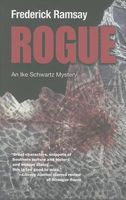(Adults)
To truly appreciate this book, you have to fall into one of these three categories: ( 1) you are a teacher (preferably of the English professorial persuasion); ( 2) you are a linguist, either by hobby or trade; or (3)you are a fanatical fan of languages and the development and fallout thereof.
While I am indeed a casual linguist (2) and I enjoy a rousing history of words as the next gal (3), I will focus my review on the impact of this book on my teaching (of reading) and my teaching of the teaching of reading. Because (does starting my sentence with ‘because’ make you cringe? If so, this is definitely the book for you!) I do see an impact that this book and these viewpoints could have on the way we currently teach our young people to read, or more specifically, for the remediation of students who have trouble mastering the art of reading.
In training, teachers are generally taught the we should have learn students learn to read by looking at the words and thinking about them and their connections to the words around them and other words similar to them (there’s a lot of thinking going on!). This author is advocating that language really isn’t meant to be understood by looking but by listening. Most of the students that I see do have trouble making that connection between what is written and what they hear. How could our teaching of reading change if we changed our practices to become more oral- and less sight-based? No more lists of ‘sight’ words; no more memorization of prepositions; no more drilling of the endless lists of exceptions that makes even native speakers of English want to pull out their hair.
How much and what should our students be learning so they make the transition to better comprehension and a true understanding of how the words work and fit together to make sense? McWhorter says, “The reason I have shown you things in such a wide and even weird variety of language (Archi? Keo?) is to get across how language looks to people who have fallen into the odd circumstance of studying it as a career. It filters how we read what is being said about languages in the newspaper, how we hear what people say about languages in passing, and how we perceive languages themselves when we hear them spoken, including our own.”
We are all studying ‘English’ in school. In our informational and technologically driven age, this book has created for me a set of questions about our current teaching of reading and language. I wish I had more answers but, right now, the questions this book has raised for me seem terribly important and troubling.
Overall, I understand more clearly than ever than learning English and being able to write clearly and effectively is akin to an art, much like singing or composing. I shall use it as an impetus on a new search for methods of teaching this thing called reading and thank the author for new ideas as yet undiscovered.
With all That Being Said (original title, much better than the settled on tongue twister), I enjoyed the book. Just enjoyed it as a read, no small task with such heavy content. McWhorter’s writing style is fluid and easy to follow for even a near novice of linguistics. There is a wicked sense of humor that lies hidden throughout the pages like a camouflaged snake, ready to strike. I found myself laughing out loud and then, when asked why I was laughing, couldn’t for the life of me explain because the audience did not fit into one of the three categories listed above.
I hope the author felt me chuckling. It’s tragic when such witty puns fall flat. Good read, John McWhorter!







